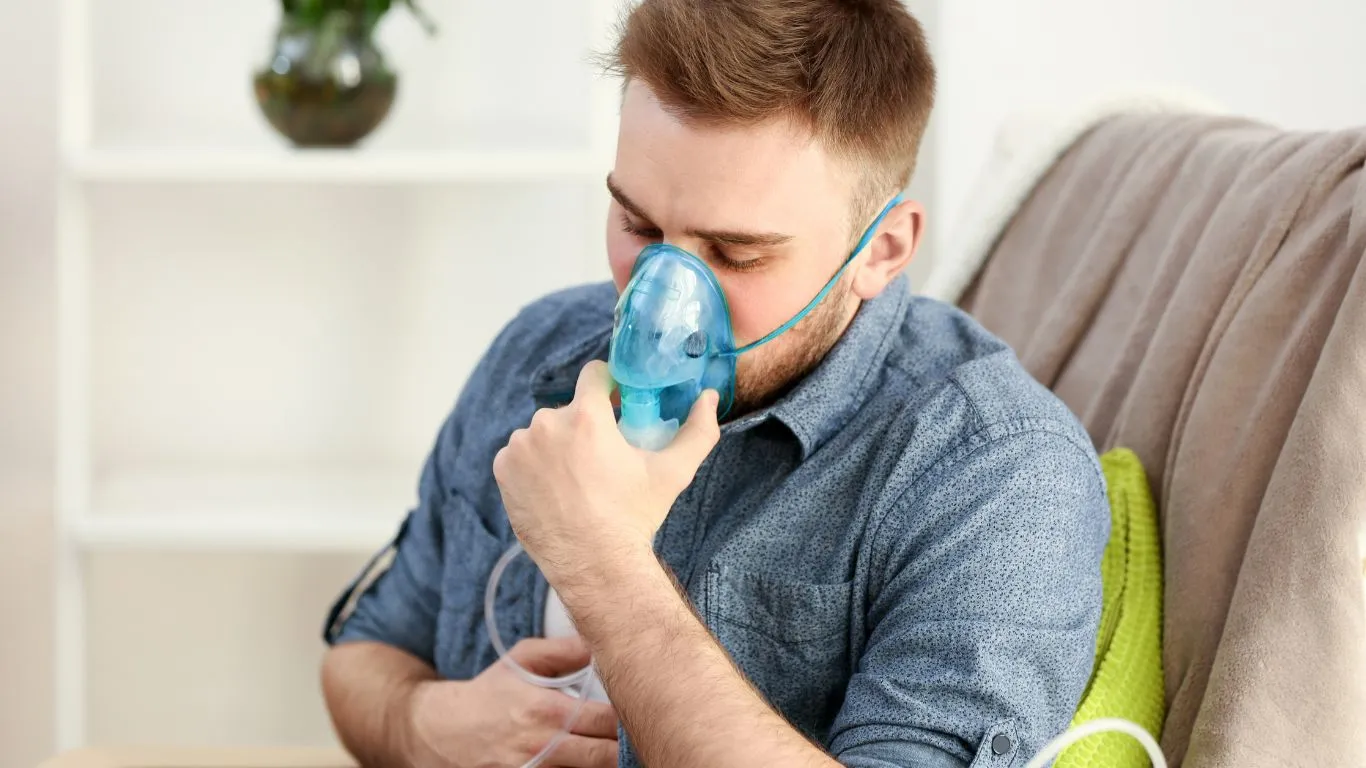Can Asthma Cause Chest Tightness When Resting? Understanding Symptoms
If you’ve ever found yourself lying down, trying to relax, and then suddenly hit with a strange, tight feeling in your chest, you’re not alone. One of the most common questions I get in clinic is: can asthma cause chest tightness when resting? And honestly, it’s a valid concern. As a pulmonary nurse practitioner, I’ve sat with countless patients who felt alarmed by this exact sensation—especially when it hits out of the blue and you’re not even exerting yourself. It’s frustrating, sometimes scary, and definitely worth talking about.
Understanding the Basics of Asthma

Let’s break it down. Asthma is a chronic respiratory condition that causes your airways to become inflamed and narrowed. That narrowing can lead to a range of symptoms like wheezing, coughing, shortness of breath, and yes—that nagging chest tightness. But here’s the thing that surprises many people: those symptoms don’t only show up during activity. In fact, asthma symptoms can sneak up on you when you’re totally at rest.
In my own experience working in both outpatient clinics and hospital floors, I’ve seen patients who’ve gone years thinking their nighttime or resting chest tightness was due to anxiety or indigestion, when in reality, asthma was the root cause all along.
So, What’s Causing Chest Tightness at Rest?
Chest tightness when resting can feel like pressure, heaviness, or even a squeezing sensation. It’s not always painful, but it’s definitely uncomfortable. With asthma, this tightness is often the result of:
- Airway inflammation: Even without obvious triggers, your lungs can stay inflamed and sensitive, especially at night.
- Bronchoconstriction: The muscles around your airways can spasm or tighten, making it harder to breathe freely.
- Mucus buildup: Increased mucus can clog those already-narrowed airways, making the chest feel compressed.
One of my patients, a high school teacher, described it as “feeling like an elephant decided to nap on my chest every time I tried to relax.” That image stuck with me—and honestly, it’s not far off for many people dealing with this symptom.
Nighttime Asthma: Why Symptoms Flare Up at Rest

If you’re like a lot of folks I treat, your symptoms probably feel worse in the evening or right as you’re dozing off. This is often referred to as nocturnal asthma, and it’s more common than you might think. Hormonal changes, cooler air temperatures, and even lying flat can contribute to chest tightness when resting for asthma sufferers.
When you lie down, gravity isn’t helping your lungs drain mucus as efficiently. Plus, the airways may become more reactive at night due to changes in cortisol and melatonin levels. That combination can set off a cascade that results in chest tightness and disrupted sleep. And let’s be real—there’s nothing more exhausting than waking up gasping or just feeling like you can’t take a deep breath.
Common Triggers That Strike When You’re Still
Sometimes the environment plays a big role. Even when you’re at rest, the things around you can quietly provoke your airways:
- Dust mites and allergens in bedding
- Cool, dry air from fans or open windows
- Strong scents from candles, detergents, or essential oils
- Post-nasal drip from allergies or colds pooling when you lie down
In my clinic, I always tell patients to take a good look at their bedroom environment. You’d be amazed how often a simple bedding change or air purifier makes a huge difference.
Is It Asthma or Something Else?

It’s important to remember that not all chest tightness is asthma. Anxiety, acid reflux, and even heart conditions can mimic similar symptoms. That’s why getting evaluated by a specialist (like someone in my role!) is so important.
When I meet a new patient dealing with this, we go over everything—from their medical history to how and when symptoms show up. I also often recommend a spirometry test, which measures how well your lungs are working. If asthma’s the culprit, we can then come up with a treatment plan that actually works.
Managing Chest Tightness When Resting: What Really Helps

So, you’re wondering how to get a handle on that chest tightness when resting caused by asthma. From my years working hands-on with patients, I can tell you it’s not just about popping an inhaler and hoping for the best. Managing asthma symptoms effectively—especially the sneaky ones that come at rest—requires a bit of detective work and a tailored plan.
One thing I always emphasize to my patients is the importance of daily management. Asthma is a chronic condition, meaning it needs consistent attention. It’s not something you can just treat when symptoms flare up; you have to stay ahead of it.
Step 1: Know Your Triggers
Understanding what sets off your asthma symptoms can be a game changer. For some, it’s allergens like pollen or pet dander. For others, irritants such as smoke, perfumes, or cold air might be the culprits. Here’s a quick list of common triggers that can cause chest tightness—even while resting:
- Dust mites and indoor allergens
- Strong chemical smells
- Changes in temperature or humidity
- Respiratory infections
- Stress and anxiety
When I’ve worked with patients, we often find that small adjustments in their home environment—like using hypoallergenic pillow covers or running a HEPA air filter—make a big difference in reducing nighttime chest tightness.
Step 2: Medication Is Your Ally
Most people with asthma are familiar with their rescue inhaler, but long-term control medications play a critical role too. These include:
- Inhaled corticosteroids: These reduce inflammation in the airways and help prevent symptoms from flaring up.
- Long-acting bronchodilators: Often combined with steroids, these help keep airways open for longer periods.
- Leukotriene modifiers: These pills help control allergic inflammation in some patients.
From personal experience, I can’t stress enough how important it is to use these medications consistently—even when you’re feeling fine. Skipping doses might seem harmless, but it can quickly lead to worsening symptoms, including that dreaded chest tightness when resting.
One patient I recall was hesitant about daily inhalers because they felt “fine.” But after we discussed how untreated inflammation silently worsens over time, they committed to the routine—and saw remarkable improvement in their quality of life.
Lifestyle Tips to Ease Chest Tightness at Rest

Beyond medication, certain lifestyle tweaks can help reduce the frequency and severity of chest tightness. Here are some practical tips I share regularly:
- Maintain good indoor air quality: Keep your living spaces clean and dust-free. Regularly wash bedding in hot water to kill dust mites.
- Stay hydrated: Drinking plenty of water helps thin mucus, making it easier to clear your airways.
- Exercise wisely: Gentle activities like walking or yoga can strengthen your lungs without overdoing it.
- Manage stress: Breathing exercises and mindfulness can reduce anxiety-related chest tightness that sometimes overlaps with asthma symptoms.
In my practice, I’ve seen patients transform their symptoms by focusing on these small but impactful habits. Sometimes, it’s the combination of medical treatment and lifestyle changes that really turns things around.
When to Seek Immediate Help
While chest tightness can be common with asthma, it’s also important to know when it’s time to get urgent care. I always tell patients to watch for signs like:
- Severe shortness of breath that doesn’t improve with your inhaler
- Difficulty speaking or catching your breath
- Blue lips or fingertips
- Rapid worsening of symptoms
If any of these happen, don’t hesitate to seek emergency medical attention. Asthma can be unpredictable, and quick intervention can be lifesaving.
How Monitoring and Regular Check-Ups Can Help

Another key part of managing asthma-related chest tightness is staying on top of your condition with regular check-ups. When I see patients every few months, we review their symptoms, medication use, and perform lung function tests like spirometry.
This ongoing monitoring helps catch subtle changes before they become major issues. Plus, it gives us a chance to adjust treatment plans as needed. For example, if your chest tightness when resting is getting worse despite treatment, we might consider adding or changing medications.
Don’t underestimate the power of keeping an open line with your healthcare provider. I always encourage my patients to keep a symptom diary, noting when their chest feels tight and what they were doing or exposed to. This simple habit can reveal patterns that lead to better control.
In all my years, I’ve learned that asthma is a team effort—between you, your provider, and sometimes your family. That collaboration is what really makes the difference when it comes to living comfortably without fear of sudden chest tightness.
Long-Term Outlook: Living Well with Asthma and Chest Tightness

Now that we’ve covered what causes chest tightness when resting in asthma, and how to manage it, let’s talk about what this means for your day-to-day life. Having asthma can feel like a heavy burden, especially when symptoms sneak up without warning. But from my experience as a pulmonary nurse practitioner, I can confidently say that with the right tools and mindset, it’s absolutely possible to live fully and comfortably.
One thing I always tell patients is that asthma doesn’t have to define you. I’ve worked with people from all walks of life—teachers, athletes, parents—who manage their symptoms so well that chest tightness rarely interrupts their routines. The secret? Consistency, communication, and self-awareness.
Building a Personalized Asthma Action Plan
Every person’s asthma is unique, which means your management plan should be, too. When I help patients create their asthma action plan, we focus on three things:
- Recognizing early warning signs of worsening symptoms
- Knowing exactly what to do when chest tightness or other symptoms appear
- Having emergency contacts and medications ready and accessible
This plan acts like your personal roadmap during those tricky moments when resting feels uncomfortable. It can be as simple as tracking peak flow readings at home, knowing which inhaler to use first, or when to call your healthcare provider. Trust me, having that clear guide can reduce anxiety, which ironically, helps ease chest tightness too.
The Role of Education and Support
I can’t emphasize enough how vital it is to stay educated about your condition. Over the years, I’ve seen patients empowered by learning more about how asthma works and what their treatments actually do. When you understand what’s happening inside your lungs, you’re less likely to feel overwhelmed by symptoms like chest tightness.
Besides medical appointments, there are tons of reliable resources and support groups online and locally where people share experiences and tips. If you’re ever unsure or just need a confidence boost, don’t hesitate to reach out or ask questions. Asthma is a journey, and no one should have to walk it alone.
When Chest Tightness Persists: What Else Could It Be?

While asthma is a common cause of chest tightness, sometimes that symptom might signal something else going on. In my clinical work, I always remind patients that it’s important to listen to their bodies and communicate any changes promptly.
Other causes of chest tightness to keep on your radar include:
- Cardiac issues: Conditions like angina or arrhythmias can mimic asthma symptoms but require very different treatment.
- Gastroesophageal reflux disease (GERD): Acid reflux can cause chest discomfort that sometimes feels like asthma.
- Anxiety and panic disorders: These can trigger tightness and difficulty breathing, often overlapping with asthma.
- Musculoskeletal problems: Strained chest muscles or costochondritis can cause localized tightness.
If you’re noticing new or worsening chest tightness, especially if it’s accompanied by other symptoms like dizziness, sweating, or chest pain that radiates, seek medical advice promptly. It’s always better to be safe and get a thorough evaluation.
Final Thoughts on Asthma and Chest Tightness
From everything I’ve seen firsthand as a pulmonary nurse practitioner, chest tightness when resting in asthma is a symptom that deserves attention but also one that can be managed effectively. It’s not just about the medicine—though that’s crucial—but also about lifestyle, environment, education, and teamwork with your healthcare provider.
Remember, your lungs don’t have to hold you back. By understanding your asthma, keeping up with your treatment, and making smart lifestyle choices, you can minimize those uncomfortable tight sensations and breathe easier—whether you’re resting or on the go.
References
Disclaimer
This article is intended for informational purposes only and does not replace professional medical advice, diagnosis, or treatment. Always consult your healthcare provider for personalized guidance regarding asthma or any other health condition.

Bianca Nala is a compassionate Nurse Practitioner with a strong background in primary and respiratory care. As a health writer for Healthusias.com, she combines her clinical expertise with a talent for clear, relatable storytelling to help readers better understand their health. Bianca focuses on topics like asthma, COPD, chronic cough, and overall lung health, aiming to simplify complex medical topics without losing accuracy. Whether she’s treating patients or writing articles, Bianca is driven by a single goal: making quality healthcare knowledge accessible to everyone.






